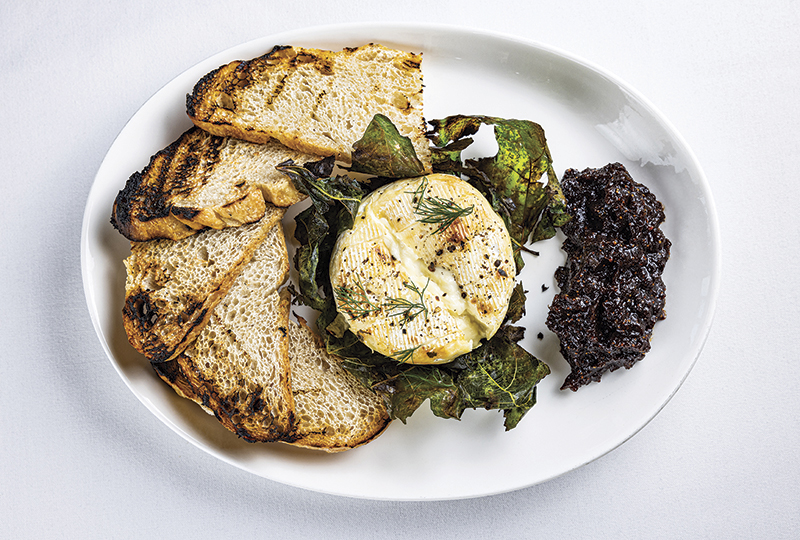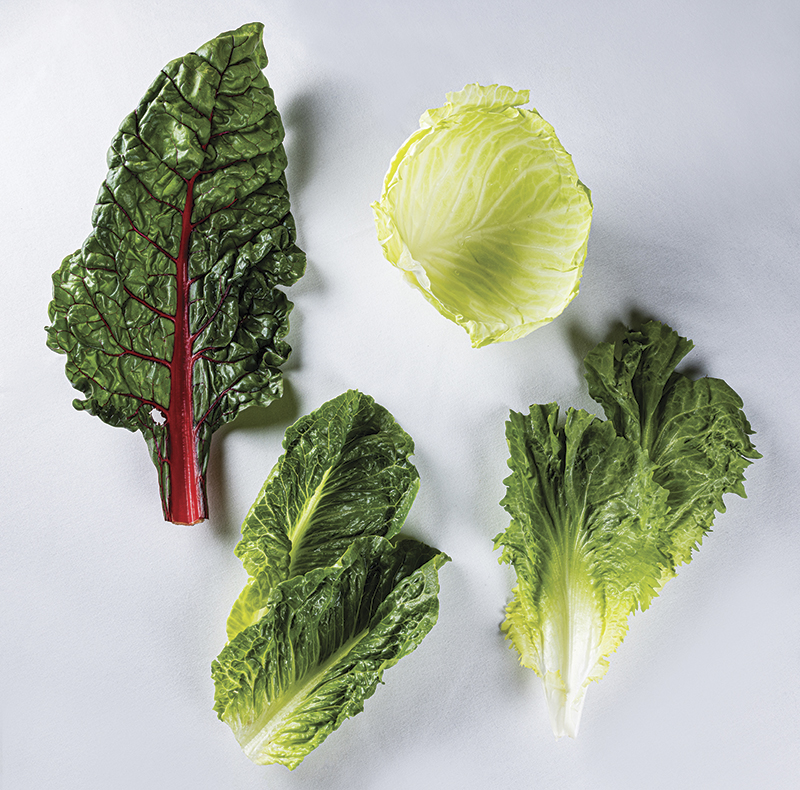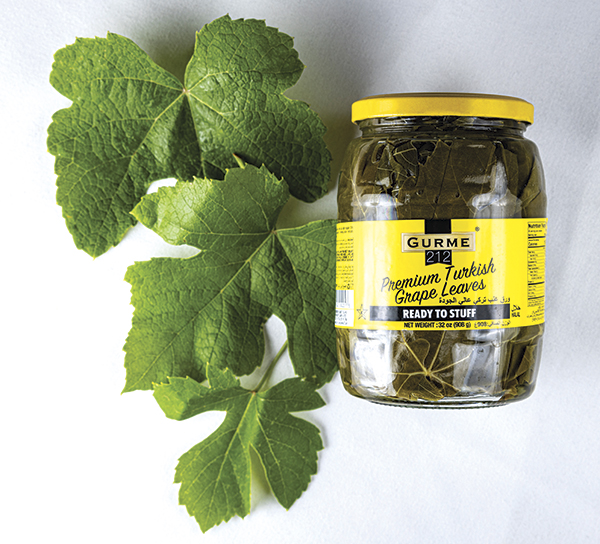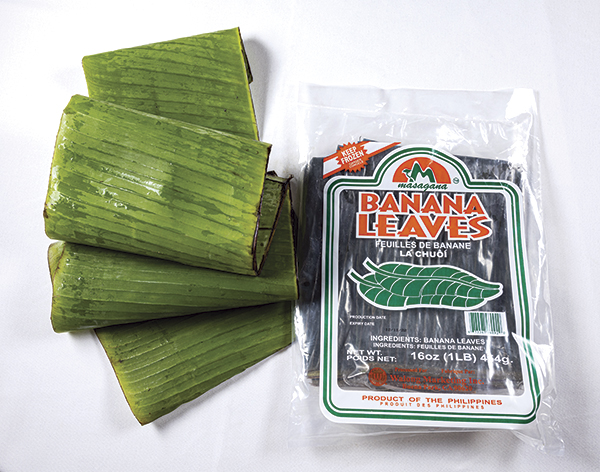
I think it was the romance of grilling foods wrapped in leaves that first attracted my attention. Imagine a lightly charred and smoking bundle exuding enticing aromas with a delicious edible surprise tucked inside. Fig leaves, banana leaves, grape leaves, escarole—as a young cook they all seemed so exotic. But when you think about it, leaves as a container for cooking long predates metal pots and pans and even crockery. They are cheap (even free if they grow in your backyard), practical, and cleanup is nonexistent—toss them in the cook fire, compost pile, or under the nearest bush. The first disposable plates!
One of my favorite leaves to use when grilling is that of the fig tree. Like other fruit woods and their leaves, when heated, their aromatics really bloom (think applewood-smoked bacon). Fig leaves give off a slightly sweet, almost coconut-y aroma, one that pairs elegantly with many foods. My first experience was with a fig leaf-wrapped lobster tail—I don’t even remember what else was on the plate. But when I peeled back the dull, crisped leaves and the perfume wafted up to my nose, I was hooked! Since then, I have experienced salmon wrapped in fig leaves (a classic of California cuisine), a loin of veal tied up in fig leaves and rosemary sprigs, and various cheeses, all of which were delightful. The leaf used as a protective wrapping doesn’t really contribute flavor, just aroma, but they can also be used to infuse tea or ice cream, and the wood is lovely for smoking and the grill.
In our climate, fig trees don’t normally produce fruit because the trees freeze back to the ground during most winters, although I do know of a few gardening extremists who go to great lengths to protect their plants in the winter by completely covering the trees in leaves and tarps. I let mine die back to the surface and just use the plants for leaf and stick production—and because they make a very handsome plant. They like a sunny, warm location, and also grow happily in a large pot that can be brought inside during the winter. Regardless of how you grow them, I hope you’ll make the fig tree a part of your summer grilling traditions, beguiling your guests with tantalizing flavors and perfumes of the exotic.
Grilled Cheese Wrapped in Fig Leaves
For your first foray into grilling with fig leaves, a nice piece of cheese is a tasty and fail-proof choice. A block of feta 3×3 inches, a squatty cylinder of goat cheese, a little wheel of brie, a chunk of young and meltable cheddar—any of these will work. For the fig leaves,* find the largest leaves you can. Rinse a few leaves and pat them dry. Lightly rub the cheese chunk with extra-virgin olive oil and sprinkle with black pepper and salt (if appropriate—many cheeses need no extra salt, so use your best judgment). The cheese may be wrapped up and cooked at this point, especially if this is your first time, and you want the full aroma of the leaves without any olfactory distractions. If you would like to add the some complexity to the flavor (and the cheese is on the uninteresting side, such as a bland brie) you can certainly add some fresh aromatics—dill, oregano, or thyme, or a sliver of garlic—to the surface of the cheese. Wrap the cheese snugly with the leaves. It may take only one leaf if the leaf is large or the cheese is small, or it may take several leaves overlapping to fully cover the cheese. Tie the bundle with kitchen twine and rub the whole thing with a bit more olive oil. When the time to cook is approaching, have ready some slices of good bread, plain or toasted, or maybe crackers. A natural accompaniment to cheese cooked in fig leaves would be some fresh figs, perhaps grilled, or a big dollop of fig jam to serve alongside, and/or some honey. The grill should be at a medium heat (a hot oven or broiler could work as well). Place the bundle on the grill, and be sure to have your guests participate in the cooking so they experience the smells and sights, too. Four or five minutes grilling on each side should be enough to lightly char the leaves to release their scent and to heat/melt the cheese. Drier cheeses will take a bit longer than soft ones. Remove the bundle to a serving plate, and with dining companions gathered round, snip the strings and unwrap the cheese, allowing the delicious fragrance of fig leaf, olive oil, and warm cheese to be experienced by all. It is best served by candlelight or under a starry summer sky, shared, and with a nice glass of wine. The romance comes naturally.
*Note that some people are sensitive to the white sap (also called latex) that comes from freshly cut fig leaves and roots. It contains furocoumarins and can cause phytophotodermatitis, so wear protective clothing or gloves and be sure to wash after handling if you see sap and don’t know if you are sensitive.
In Your Pantry: Leaves
The use of leaves as cooking vessels—not to mention their use as a plate or eating utensil—is commonplace across the globe. Before worldwide shipping, freezing, and temperature-controlled storage, the climate and growing conditions of an area dictated the type of leaf used and the foods that would be cooked in them. Let the adage “what grows together, goes together” be your guide when trying to decide which leaves to use.

Cabbage/Swiss Chard/Romaine/Escarole
In temperate European climates, larger leaved edible plants are used for beloved dishes whose fillings vary from region to region, household to household, many containing various grains and ground meats. Those leaves with more assertive flavors (like cabbage and escarole) influence the taste of the filling. To make them easier to roll and use as a wrap, they are first blanched in boiling water, and the central sturdy stalks, spines, and “veins” are trimmed flat or cut out of the leaf entirely. A contemporary use of milder flavored tender greens (like lettuces) is that of a substitute for flatbreads for those wishing to reduce their intake of carbohydrates or gluten.

Grape Leaves
Most common around the Mediterranean, Middle East, and in regions known for wine production, grape leaves are best known for dolmas (“something stuffed” but not limited to grape leaves). The leaves are first blanched in boiling water or steamed, the stem removed in older, tougher leaves, and are sometimes brined or pickled. The variety of fillings is absolutely limitless as they have been made for over a thousand years. You can collect your own leaves in the spring or early summer (later in the year they tend to get a little tough and can also be brittle) and freeze them, or buy the leaves already prepared and brined in many grocery stores, especially those with a Middle Eastern influence. Because of the tannins in the fresh leaves, putting one or two in the bottom of jars of pickles can help keep pickles crisp. A brief internet search for stuffing ideas will take you down a seemingly bottomless rabbit hole of inspiration.

Banana Leaves
In tropical regions, the sturdy, glossy leaves of the banana tree give a subtle fruitiness to the foods they wrap. Though nontoxic, they are simply too fibrous to eat. Great for wrapping fish, tamales, bundles of rice with sweet or savory garnishes, or wrapping a whole pig for a celebratory feast. When buying banana leaves they may be found fresh or frozen, whole (up to 5 feet long) or precut into squares or circles, ready for use. Before using, whole leaves should have the tough, fibrous string on the edge of the leaf cut away but left in as long as possible—the ‘natural’ string is great to use for tying up banana leaf packages. To wrap smaller items, the leaves should be washed and lightly dried, then the leaves passed over a flame briefly to soften them so they become more pliant. When wrapping to use for steaming, it is suggested to use two leaves, wrapping twice, to help protect the filling, as the leaves can easily tear.


